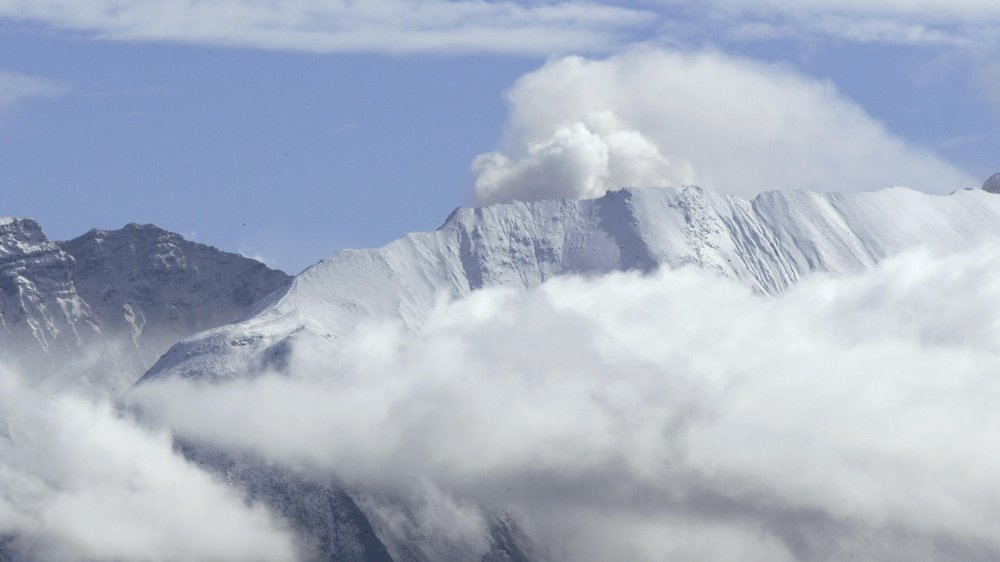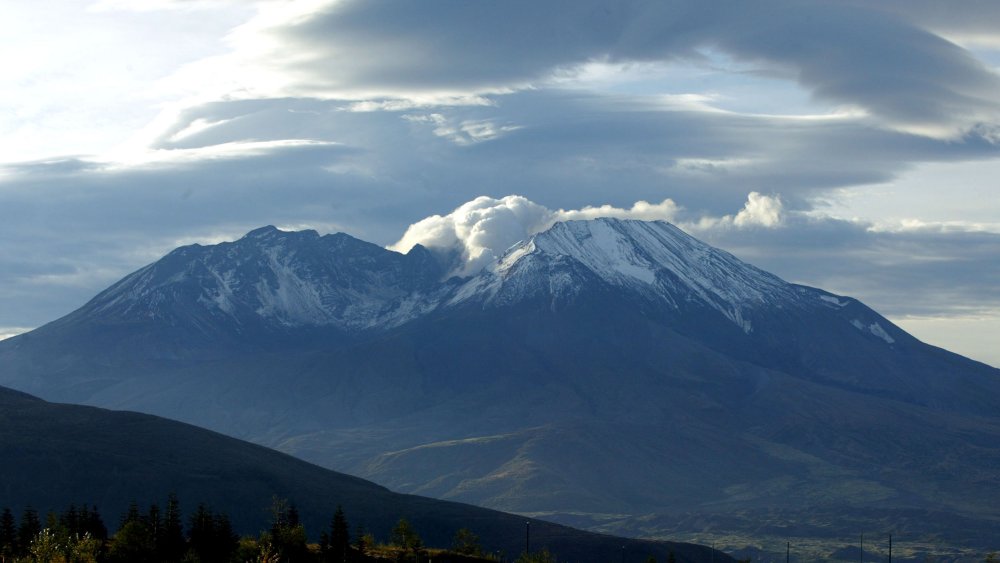The Truth About The Most Powerful Volcano Eruption In U.S. History
Photographer Dave Crocket described the 1980 eruption of Mount St. Helens as "hell on Earth," per My Northwest. One of Washington state's seven mountains, it had sat inactive since 1857, says the Encyclopedia Britannica. But roughly 123 years later, that slumbering land beast began to stir in disturbing fashion. As History describes, on March 16, 1980, a 4.2-magnitude earthquake rocked the mountain. Eleven days later, a 250-foot-wide vent opened and ash exploded 1,000 feet into the air. The ominous plume produced lightning bolts, but the thunderous eruption wouldn't come for more than a month.
In the meantime, an alarming bulge formed on the north side of Mount St. Helens and grew throughout April. Though these red flags practically slapped residents in the face, not everyone took the warning signs seriously. According to historian Feliks Banel, a shutdown of the surrounding area was laxly enforced. People owned vacation homes, and logging companies wanted to continue operating. The National Guard set up roadblocks, but drivers dodged the obstacles by using unregulated logging roads. While numerous residents hit the road, some insisted on staying put. Some would never leave.
Hell-ens on Earth
Shortly before Mount St. Helens unleashed hell, a 84-year-old local named Harry Truman garnered national admiration and media attention for his steadfast refusal to move, via History. In one of several televised interviews Truman, who lived with 16 cats, declared, "If I left and I lost this place, I'd die in a week. I couldn't live. I couldn't stand it. So I'm like that old captain, I'm going down with the ship." It's believed that he was buried under 150 feet of mud and volcanic matter after Mount St. Helens erupted on May 18, 1980.
Baker Bruce Nelson was fishing with friends about 13 miles away from the volcano when it erupted. According to Oregon Public Broadcasting, Nelson said that at about half-past 8 in the morning he saw a black cloud in the distance. Seconds later, Nelson and his friends were enveloped in darkness, and ash filled their mouths. "I started to climb through fallen trees," he recalled. "But it got extremely hot. I'm a baker who works with huge ovens. This was five or six hundred degrees Fahrenheit."
It was an apocalyptic picture come to life. The lava-breathing mountain vomited ash through the air at 650 miles an hour. One thousand three hundred-degree lava traveled for miles. "A cloud of ash, rocks, gas and glacial ice roared down the side of the mountain at 100 mph," writes History. The eruption charred millions of trees and killed 57 people.

